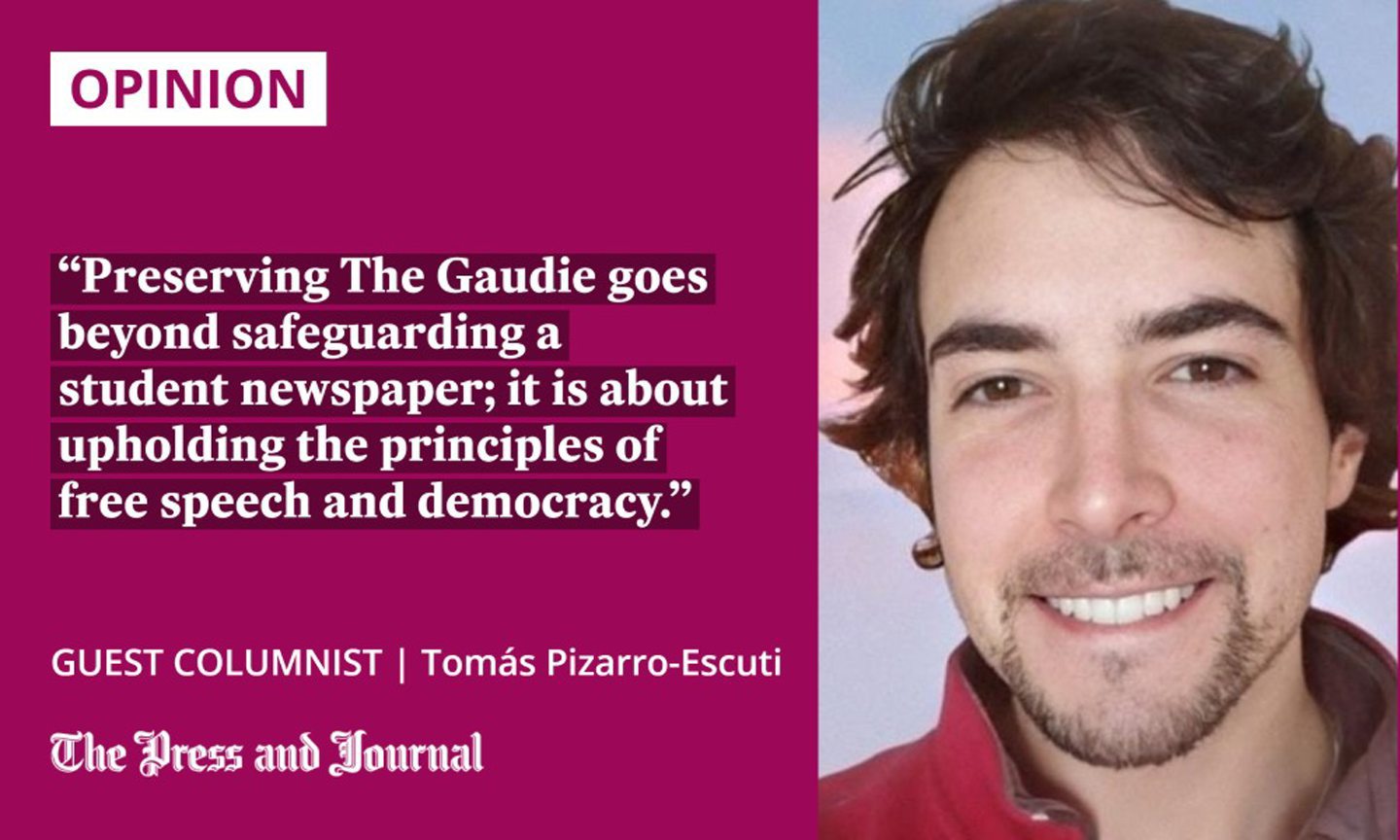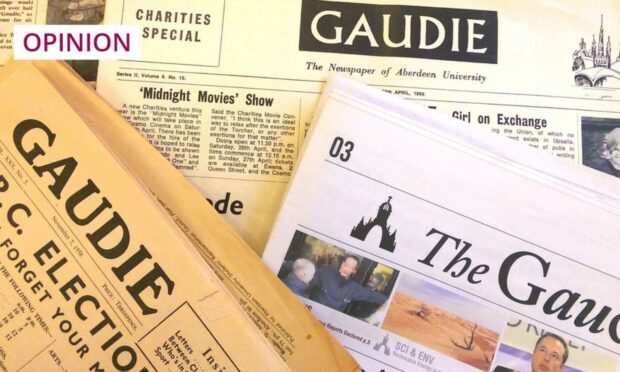Since its inception in 1934, The Gaudie, Scotland’s oldest student newspaper, has played an integral role in the vibrant history of the University of Aberdeen.
With its rich history and unwavering dedication to independent journalism, the esteemed publication stands as a testament to the power of student voices. However, in recent years, financial challenges have cast a shadow over its future.
It is crucial to ensure perpetual funding for The Gaudie, to secure its rightful place in Aberdeen’s future.
Amidst Aberdeen’s gradual decline, iconic public services, once vibrant symbols of the city’s soul, now face an uncertain fate. The loss of institutions such as the Belmont cinema, libraries in Cornhill, Cults, Ferryhill, Kaimhill, Northfield, and Woodside, along with Bucksburn Swimming Pool and Aberdeen’s Beach Leisure Centre, contribute to the city’s deprivation.
In this context, preserving The Gaudie becomes all the more critical, as it represents a resilient bastion of Aberdeen’s cultural landscape, fostering a shared understanding of the city’s challenges and triumphs.

From its humble beginnings, The Gaudie has blossomed into a beacon of creative expression, intellectual discourse, and investigative journalism. Over nearly nine decades, it has fearlessly pushed the boundaries of conventional student media, championing a platform that encourages thought-provoking conversations on social, political, and cultural issues.
In an era marred by disinformation and media distrust, the University of Aberdeen’s student newspaper has remained unwavering in its commitment to truth, transparency, and fairness – a testament to the integrity and dedication of its student journalists.
Moreover, The Gaudie serves as a nurturing ground for aspiring writers, journalists, and artists, providing an unparalleled platform to hone their skills and ignite their imaginations. Through its robust team of student contributors, it fosters an environment of collaboration and growth, cultivating the next generation of media professionals.
However, the impact of the paper extends beyond the confines of academia. It has become a vital conduit for dialogue and understanding, connecting the university and the wider community in a symbiotic relationship.
Fostering a sense of belonging and community
By shedding light on local events, issues, and achievements, The Gaudie amplifies diverse voices, invigorates civic discourse, and fosters a sense of belonging. Its influence permeates the very fabric of Aberdeen, enriching the city’s cultural landscape and nurturing a shared understanding of its challenges and triumphs.
What sets the publication apart is not only its informative articles, but also its ability to foster a sense of belonging and community among students. It acts as a bridge, connecting individuals from a wide range of faculties and backgrounds, nurturing a shared sense of purpose and identity. The newspaper’s collaborative spirit encourages students to contribute, sharpening their skills in journalism, writing, and critical thinking.
@aberdeenuni it's time. Let's work together to ensure The Gaudie can continue for years to come.
Signed:
11 MPs, 17 MSPs, dozens of Gaudie alumni in media and journalism, 69 members of staff, and several hundred students, University alumni, and members of the public. pic.twitter.com/XlUm5fJzts— The Gaudie (@thegaudie) June 20, 2023
The University of Aberdeen must recognise its moral duty to safeguard this historic institution. The funding required to sustain the student newspaper’s operations can be raised through various avenues, such as the Development Trust and the Alumni Annual Fund.
The newspaper would also benefit significantly from private funding, sourced from donors and local business advertising. With increased financial support, it could expand its coverage and maintain its editorial independence.
Students have done their bit – now it’s the university’s turn
The Gaudie would be an irreplaceable loss, not only for the university but also for the entire local community. It represents a vital link between students, staff, and the city, encapsulating the spirit of academic freedom, democratic expression, and community engagement.
Students have played their part in ensuring the longevity of The Gaudie, and now it is time for the university to step up and fulfil its moral duty.
By saving The Gaudie, the university will not only protect its history, but also demonstrate a resolute commitment to its foundational principle
By guaranteeing secure funding and establishing a dedicated fund for The Gaudie, the university will not only protect its history, but also demonstrate a resolute commitment to its foundational principle of being “open to all and dedicated to the pursuit of truth in the service of others.”
Preserving The Gaudie goes beyond safeguarding a student newspaper; it is about upholding the principles of free speech and democracy. Let us save Scotland’s oldest student newspaper and ensure that its influence continues to shape the future of the north-east and beyond.
Tomás Pizarro-Escuti is a law student and a member of the University of Aberdeen Academic Senate

Conversation